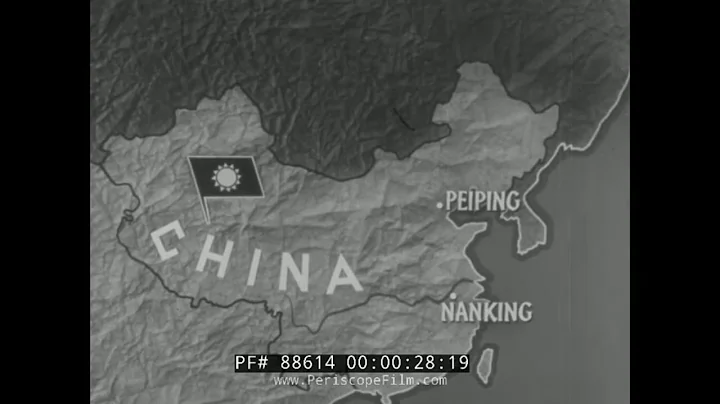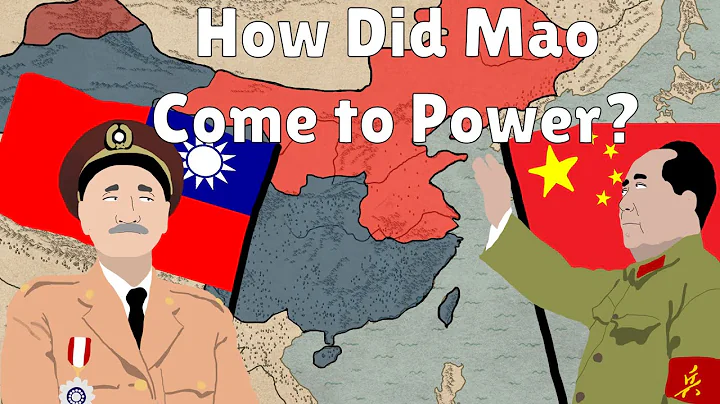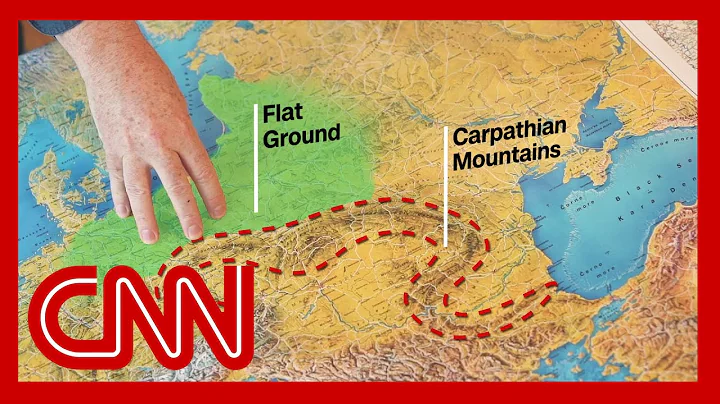
text | blockbuster record
editor | blockbuster record
Before 1949, among the  7 first-level generals of the Kuomintang, four of them finally made the decision to abandon the dark side and join the bright side, choosing to stand with the people. Do you know who they are? What happened to them?
7 first-level generals of the Kuomintang, four of them finally made the decision to abandon the dark side and join the bright side, choosing to stand with the people. Do you know who they are? What happened to them?

The first-level generals of the Kuomintang are all the mainstay of the Kuomintang, second only to Chiang Kai-shek . Why would they choose to defect to the Communist Party?
Below, Yiming will lead everyone to see why the four first-level generals of the Kuomintang who abandoned the dark side and turned to the bright side were forced to leave by Chiang Kai-shek, and what happened to them.
The first Tang Shengzhi
On April 2, 1935, Tang Shengzhi became the first batch of officers to be awarded the rank of first-class general in the army.

In the Northern Expedition , Tang Shengzhi led his army to win consecutive battles. The Hunan Army Ye Kaixin's and Wu Peifu 's Northern Army were all defeated by him one by one and fled in embarrassment. In mid-August, with the support of the Chinese Communist Party organization, the Communist Party of China invaded Wuchang City and completely eliminated Wu Peifu's power.
However, as Tang Shengzhi's influence grew, Chiang Kai-shek began to worry that Tang Shengzhi would become his next obstacle, so he began to restrict Tang Shengzhi as the commander-in-chief of the Northern Expeditionary Army, which led to conflicts between the two. upgrade.

After the Northern Expedition
After the Northern Expedition, Tang Shengzhi strongly advocated the crusade against Chiang Kai-shek. However, due to Yan Xishan's defection before the battle, Tang Shengzhi's crusade army was defeated and returned. Tang Shengzhi had no choice but to flee to Southeast Asia for refuge alone.
After the September 18th Incident broke out, Tang Shengzhi focused on the national crisis and decided to temporarily join hands with Chiang Kai-shek to deal with the outside world. However, Tang Shengzhi had already said that he would never participate in any civil war between the Kuomintang and the Communist Party activities.

During the Nanjing Defense War, Tang Shengzhi took the initiative to volunteer and was appointed as the commander-in-chief of the Nanjing Garrison , leading the army to guard the precarious Nanjing City.
At that time, the city of Nanjing was a city that the Japanese army was determined to win, so they dispatched sea, land and air forces to encircle and suppress the defenders of Nanjing City. Tang Shengzhi fought bloody and bravely, and finally received orders from Chiang Kai-shek to retreat.

Defense Battle of Nanjing
After Tang Shengzhi retreated, the city of Nanjing finally fell. Tang Shengzhi was disheartened and decided to resign from all positions and return to his hometown in Hunan to start teaching. Its actual purpose is to safeguard the anti-Japanese united front and cultivate anti-Japanese and national salvation talents.

On the surface, he returned to his hometown to live in seclusion, but in fact he kept in touch with the underground organizations led by the Communist Party and supported them in their underground struggles. He kept his name anonymously and traveled in many directions, making a significant contribution to our party's resistance to the Japanese aggressors. Hunan was finally able to peacefully liberate China, and Tang Shengzhi was indispensable.

In April 1949, Tang Shengzhi established the "Hunan People's Self-Rescue Committee" , organized many business figures and political celebrities to jointly call for anti-Chiang and anti-civil war, and began to plan for the peaceful liberation of Hunan.
His behavior prompted Cheng Qian and Chen Mingren to make up their mind to peacefully revolt, and in 1949, they welcomed the People's Liberation Army Rucheng in Dong'an and liberated Hunan.

After the founding of New China, Tang Shengzhi served as the deputy governor of Hunan Province until his death in Changsha in 1971.
Second place Cheng Qian
On May 13, 1939, Cheng Qian was awarded the rank of first-class general of the National Revolutionary Army.

Cheng Qian was an outspoken man and devoted himself to the people. In 1929, Chiang Kai-shek and Li turned against . At this time, the Guangxi clique was in an isolated and helpless state and was driven back to Guangxi by Chiang Kai-shek.
But Cheng Qian always puts the overall situation first, puts the survival of the nation first, repays grievance with kindness, and the two parties run around, striving to resolve the conflicts between the two sides in a peaceful way.

During the Anti-Japanese War, as Chiang Kai-shek promulgated confusing policies one after another, Cheng Qian also began to realize that Chiang Kai-shek's perverse actions were against the destiny , so after the victory of the Anti-Japanese War, he began to plan for peaceful liberation..
In the 1948 vice presidential election, Cheng Qian did not vote for Sun Ke, whom Chiang Kai-shek was optimistic about. Instead, voted for Li Zongren, which caused Li Zongren to become the vice president and paved the way for Chiang Kai-shek to step down. .

In 1949, the Guangxi clique came to power, and Li Zongren was appointed acting president. So Cheng Qian and Chen Mingren began to discuss the peaceful liberation of Changsha with the Communist Party, and held a preparatory meeting to welcome the liberation on August 3.
The next day, Cheng Qian and Chen Mingren held a peaceful uprising in Changsha, which eventually led to the peaceful liberation of central Hunan. Since then, he has always maintained close contact with the Communist Party and ordered the suspension of military conscription and the reduction of grain requisitions.

After the founding of New China, Cheng Qian continued to do his part for the country until his retirement. Chairman Mao once praised Cheng Qian, "Decades of ups and downs have never defeated him. Cheng Qian is not simple."

Cheng Qian has been thinking about the peril of the nation throughout his life. He has never participated in the domestic civil war until When he died at the age of 87, his heart was always with the people.
The third place is Chen Shaokuan
Chen Shaokuan was awarded the first-class navy admiral on September 6, 1935. He was the only first-class navy admiral during the mainland period.

Chen Shaokuan was among the first batch of outstanding sailors sent to the United States to study in our country. His navigation skills and nautical combat experience were second to none at the time. After returning to China, he held an important position in the navy and was later promoted. To the Commander-in-Chief of the Navy .
Chen Shaokuan once participated in the command of Jiangyin Naval Battle, Wuhan Defense Battle. His naval combat theory made great contributions to the naval construction of the Republic of China and the training of naval personnel.

Overseas inspection The person wearing the hat is Chen Shaokuan
After the July 7th Incident broke out, Chen Shaokuan actively participated in the front line of the Anti-Japanese War. In the first collision of the Jiangyin naval battle, Chen Shaokuan led the navy to shoot down 4 Japanese aircraft and injure 8 at the expense of two ships. This also triggered a crazy revenge by the Japanese Navy.

Japan launched a bombing attack on Jiangyin. Chen Shaokuan was forced to retreat to Wuhan to launch a defense war in Wuhan. He scuttled 18 enemy ships and successfully blocked the Japanese navy's advance, which was indispensable.

After Japan surrendered, Chen Shaokuan resolutely resisted the civil war. Chen Shaokuan disobeyed Chiang Kai-shek's military orders several times and refused to send troops to the People's Liberation Army. Chen Shaokuan claimed that he had not served the country much during the anti-Japanese war and was ashamed of his countrymen. If he participated in the civil war again, he would feel extremely guilty.
So he used the excuse that the fleet needed repairs, continued to increase fuel costs, refused to send troops, and led the fleet south to Taiwan for inspection.

Chiang Kai-shek was extremely dissatisfied with Chen Shaokuan's behavior and scolded him. So he ordered the abolition of the navy and removed Chen Shaokuan from the post of commander of the navy. Chen Shaokuan, who was jobless and light-hearted, finally chose to live in seclusion in his hometown Linlei Township .
In 1949, Chiang Kai-shek considered that his behavior towards Chen Shaokuan was inappropriate, so he personally came forward to ask him to come out. However, Chen Shaokuan avoided it and tactfully rejected Chiang Kai-shek.

In the same year, Zhang Dingcheng, Chairman of the People's Government of Fujian Province, once again asked him to come out and work for the revolution. Chen Shaokuan readily agreed and reappeared on the Chinese political stage to contribute to the cause of socialist revolution and socialist construction He worked hard and made valuable contributions.

After the founding of New China, Chen Shaokuan served as the governor of Fujian.. He finally died in Fuzhou on July 30, 1969.
No. 4 Li Zongren
On April 2, 1935, Li Zongren became the first batch of people to be awarded the first-level general.

As the leader of the Guangxi faction of the Kuomintang, Li Zongren was one of the first forces to oppose Chiang Kai-shek. The seeds of conflict had already been sown during the Northern Expedition.

In March 1929, Li Zongren raised his own troops, and the first Chiang-Gui War broke out between him and Chiang Kai-shek's direct troops, and he was defeated in the first battle. So he joined forces with Feng Yuxiang and Yan Xishan to launch the second Jiang-Gui war, but still lost.
During the third time, Li Zongren united with the Guangdong Army , but unfortunately they still failed to overthrow Chiang Kai-shek.

Finally, during the Anti-Japanese War , Li Zongren and Chiang Kai-shek shook hands and made peace, regardless of their past grievances, but in fact they were still fighting overtly and secretly in private.
After the great victory in Taierzhuang, Li Zongren participated in many battles such as the Battle of Xuzhou, the Battle of Wuhan, and the Battle of Suizao, and made great achievements in fighting against the Japanese invaders.

After the victory of the Anti-Japanese War, Li Zongren and Chiang Kai-shek began their fight again. During the election of vice president in 1948, Li Zongren defeated the vice president arranged by the Chiang Clan and successfully won the position of vice president of the Republic of China.
After the Battle of Liaoshen, Battle of Huaihai, Battle of Pingjin, more than half of the elite forces of the Kuomintang were wiped out. Chiang Kai-shek finally gave in to the pressure and announced his resignation , and Li Zongren became the Acting President of the Republic of China .

After seeing the strength of the People's Liberation Army in the three major battles of , and the absolute strength advantage the People's Liberation Army had at this time, Li Zongren made the most reasonable arrangement, that is, peace talks .

However, facing the peace conditions proposed by the Communist Party, Li Zongren hesitated. However, the Communist Party's current fighter jets did not allow him to hesitate for another moment. Mao Zedong and Zhu De issued the order to march .
The People's Liberation Army crossed the Yangtze River and captured Nanjing. The National Government was officially overthrown . Li Zongren led the remnants to retreat to Guilin in an attempt to make a final resistance. However, as Bai Chongxi 's troops were wiped out, Li Zongren 's last hope was shattered .

At this moment, Li Zongren had no way forward and no retreat. He would definitely not be able to go to Taiwan. The whole country was liberated, and I was afraid there would be no place for him. He had no choice but to go into exile in the United States in the name of medical treatment., this time It’s been sixteen years since I left.

In the past sixteen years, Li Zongren learned from the pain and finally began to repent, so he sent Cheng Siyuan to Beijing five times to visit Premier Zhou Enlai, hoping to seek opportunities, return to his roots and return to his motherland.
In February 1964, Li Zongren published an open letter in the United States, warning the United States not to try to interfere with China's and to go down the wrong path. And in the following year, many obstacles were overcome, and returned to the motherland, .

After returning to China, Premier Zhou Enlai went to the airport to receive him in person. Li Zongren said that he would definitely contribute to the reunification of the motherland in the coming days.

Before his death in 1969, Li Zongren left a letter to Chairman Mao and Premier Zhou:
The path I took when I resolutely returned to the motherland from overseas in 1965 was the right one. In this great era, I deeply feel I deeply feel that it is an extremely glorious thing to become a member of the Chinese people. At the last moment when I was about to pass away, I was deeply concerned about the future of the Kuomintang and all patriotic intellectuals who stayed in Taiwan and overseas. They had only one way, which was to return to the embrace of the motherland like me.

In January 1969, Li Zongren's condition deteriorated and passed away at the age of 78.





















